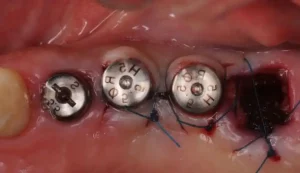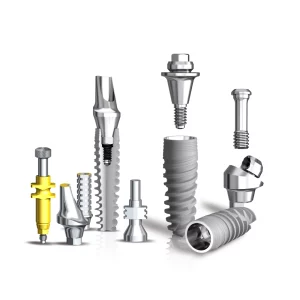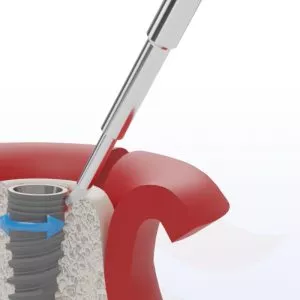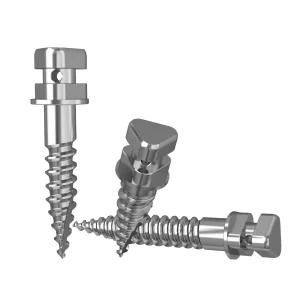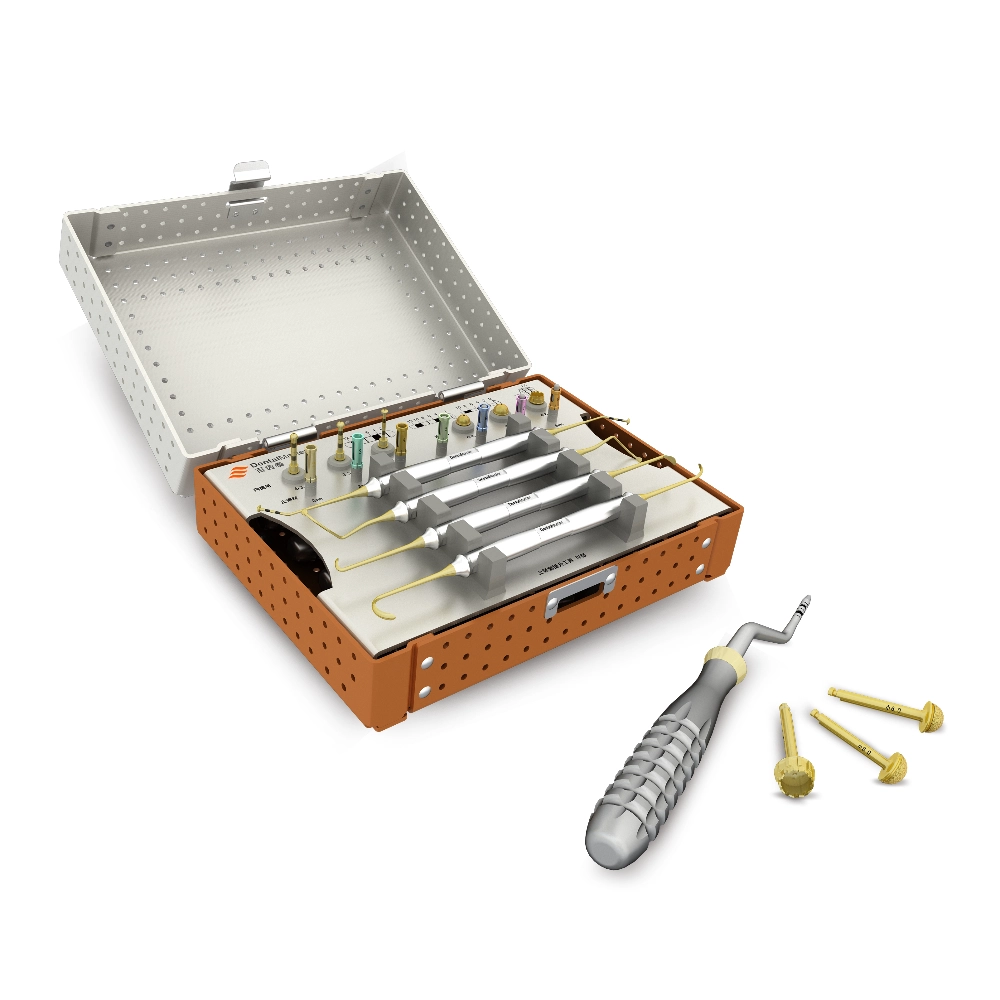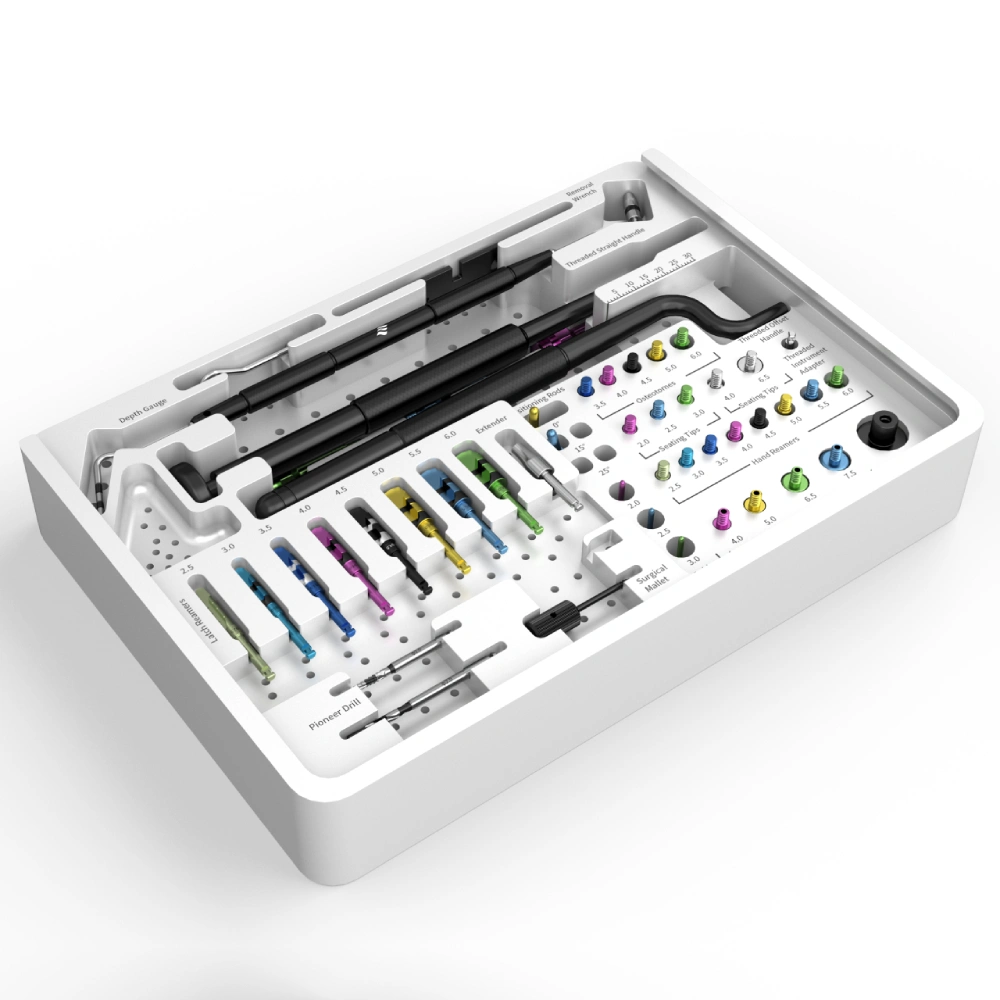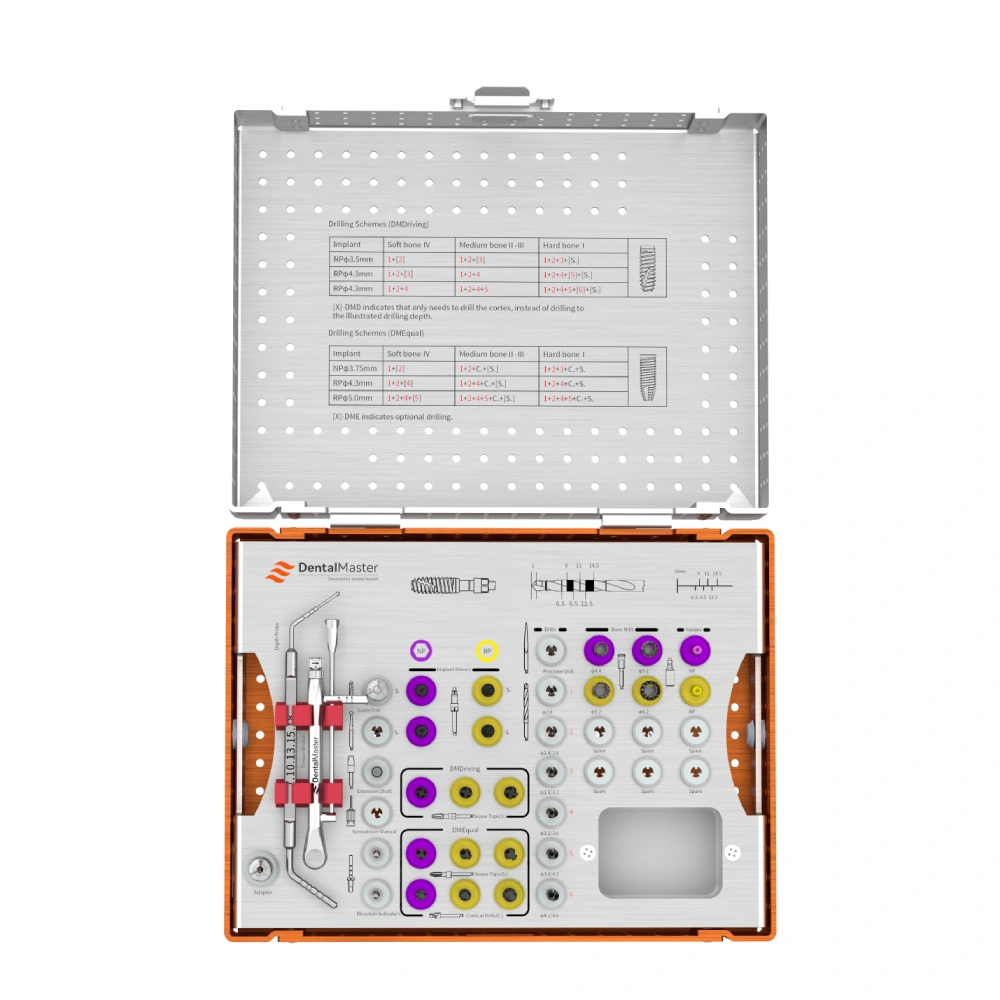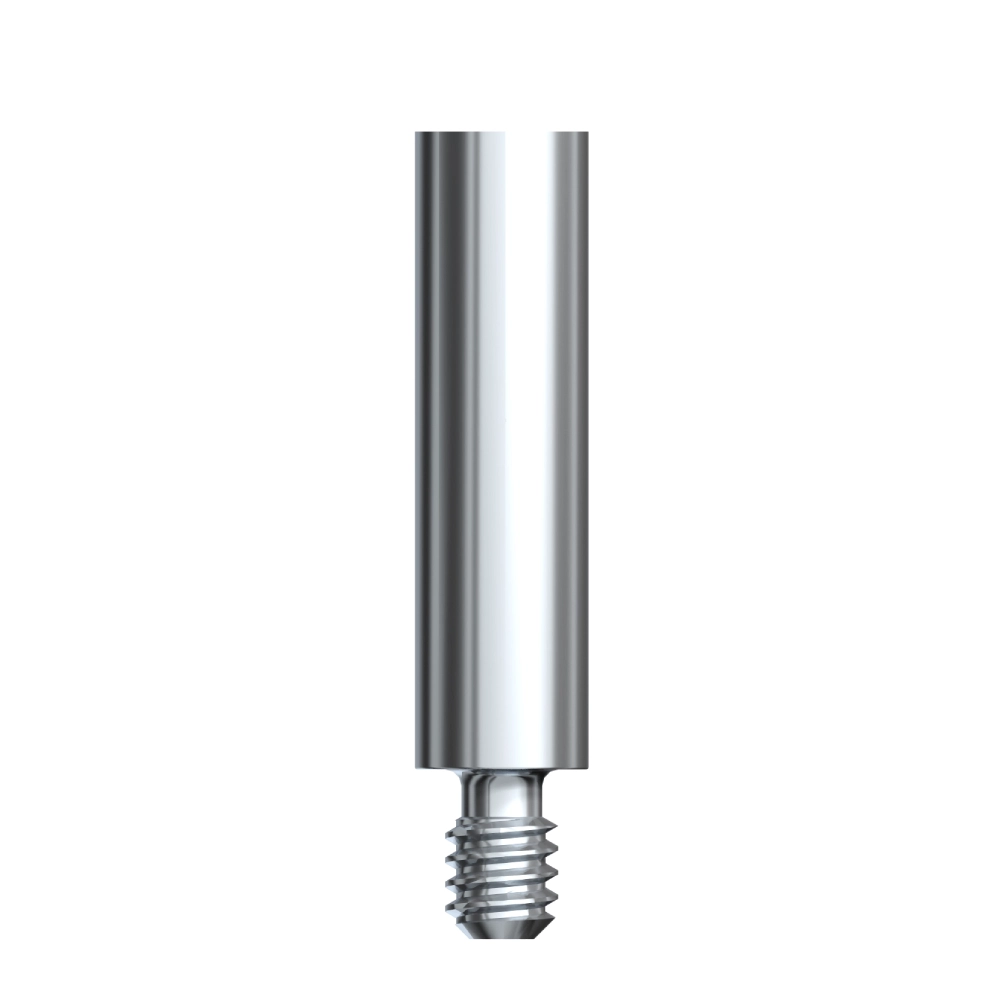
On the journey toward healthy and aesthetically pleasing teeth, dental implant surgery has brought new hope to many patients with missing teeth. However, a dental implant is not a simple, single-step procedure—it involves multiple crucial components and complex processes. Among them, the implant abutment is an indispensable and vital part of the entire implant system. Though it may seem small, the abutment plays a pivotal role in the success of the dental implant.
Many people considering dental implants often know very little about the abutment, which can lead to confusion during both the surgical decision-making and post-operative care stages. To provide a comprehensive and in-depth understanding of implant abutments and to better prepare patients for dental implant procedures, this article will explore key aspects of abutments—including their definition, types, placement process, care instructions, and how to choose the right abutment and dental professional. Our goal is to help you make informed decisions throughout your dental implant journey.
What Is a Dental Implant Abutment?
A dental implant abutment is a critical component of the implant system. It connects the implant (the artificial root placed in the jawbone) with the crown (the visible part of the artificial tooth). In simple terms, the abutment serves as a bridge between the implant and the crown.
Functionally, the abutment serves several purposes:
- Support and Connection
It provides stable support for the crown, ensuring it is firmly attached to the implant and can withstand chewing forces. Think of it like the foundation of a skyscraper—it’s the solid base that supports the structure above. - Shape and Alignment Adjustment
By selecting abutments in various shapes and sizes, dentists can adjust the position and angle of the crown to better match the surrounding natural teeth and achieve a more aesthetic outcome. For example, if adjacent teeth are slightly angled, the dentist can use an angled abutment to make the implant crown look more natural. - Soft Tissue Shaping
Abutments also help in shaping the gum tissue, promoting a healthy and visually appealing gum contour around the implant. This is similar to pruning plants in gardening—the abutment shapes the gums into an ideal form.
What’s the Difference Between an Implant, Abutment, and Crown?
- Implante:
The foundation of the dental implant system, usually made of biocompatible titanium, surgically placed into the jawbone. It fuses with the bone (osseointegration), like tree roots anchoring into soil. - Abutment:
As mentioned, the abutment is the connector between the implant and the crown. One end is tightly attached to the implant, and the other is used to hold the crown in place. Common materials include titanium and zirconia. - Coroa:
The visible part of the implant that looks and functions like a natural tooth. It can be custom-made to match the color and shape of your teeth, offering both beauty and chewing function. Crowns are often made from porcelain or all-ceramic materials.
In simple analogy:
The implant is the foundation, the abutment is the framework, and the crown is the decorative exterior. Together, they form a complete “tooth structure.”
Why the Abutment Is Critical to Implant Success
- Stability of the Implant
A tight and accurate connection between the abutment, implant, and crown is essential for the implant’s stability. If the abutment is loose or mismatched, the implant could become unstable during chewing—potentially leading to implant failure. For instance, when chewing hard foods, an insecure abutment may cause the entire crown to wobble. - Resultados estéticos
The shape, size, and material of the abutment affect the final crown’s position and look. A poorly selected abutment can result in an awkward or mismatched crown, impacting the harmony of your smile and self-confidence. For example, if the abutment is too tall or too short, the crown may appear misaligned with neighboring teeth. - Saúde da gengiva
A well-designed abutment encourages healthy gum tissue growth, forming a tight seal (known as a gingival cuff) around the implant. This helps keep food particles and bacteria out, reducing the risk of peri-implantitis (inflammation around the implant). In contrast, a poorly designed abutment can irritate the gums, causing redness, bleeding, or even infection. For instance, sharp or improperly finished edges on the abutment may damage the surrounding gum tissue.
Tipos de pilares de implantes dentários
Healing Abutment vs. Permanent Abutment
Abutment de cicatrização:
Also known as a healing screw, the healing abutment plays a crucial role in dental implant surgery. It is used during the healing phase after the implant is placed, serving to hold temporary or permanent prosthetics in place. This small screw is inserted into the top of the implant, allowing soft tissue to heal around it. The shape and size of healing abutments are matched to the specific implant system being used, and they are typically made from high-strength materials like titanium alloy to adapt to the oral environment and restoration requirements. Healing abutments are suitable for both single-tooth and multiple-tooth implants and can be adjusted in height and angle to accommodate crown placement.
They offer high strength, can withstand bite forces, and are simple in design, making them easy to operate and time-efficient—thus reducing surgical time and risk. Additionally, they stimulate local bone growth and healing, making the final prosthetic more stable. After the healing period is complete, the healing abutment is typically replaced with a permanent abutment to support the final dental crown.
Permanent Abutment:
A permanent abutment is used after the soft tissue around the implant has fully healed. It provides a durable, long-term connection between the implant and the dental crown. Made from durable materials such as metal alloys, ceramics, or zirconia, permanent abutments are designed to meet long-term functional needs. They are often custom-designed to suit the shape and position of the final crown, ensuring structural stability and aesthetic results.

Stock Abutment vs. Custom Abutment
Stock Abutment:
Stock abutments are pre-manufactured by implant companies and designed to match their specific implant systems in shape, size, and dimensions. They are generally more affordable and suitable for most patients. However, they may not offer the same level of precision or aesthetic outcome as custom abutments.
Custom Abutment:
Also called a personalized abutment, this type is specially made to fit the individual patient’s oral condition. It is particularly useful when there are unique challenges—such as misaligned implant angles, limited gum space, or implants placed too close together. Custom abutments allow for aesthetic restoration, offering a tailored transgingival (through-the-gum) design and an optimal emergence profile. These features help reduce bacterial adhesion and significantly lower the risk of infection. However, pilares personalizados are generally more expensive than stock abutments.

Common Abutment Materials
Pilares de titânio:
Pure titanium abutments offer excellent biocompatibility, enabling close integration with surrounding tissue to form a stable bond. Titanium is also highly corrosion-resistant and mechanically strong, capable of withstanding the forces of chewing. Many premium implant brands use titanium as a standard material. Titanium alloy abutments (e.g., with aluminum, vanadium, or zirconium) further improve hardness and wear resistance while maintaining good biocompatibility and strength.
Pilares de zircônia:
Made from zirconia ceramic, zirconia abutments provide outstanding aesthetics. Their tooth-like color closely mimics natural teeth, making them ideal for restorations in the front (aesthetic) zone. Zirconia is also hypoallergenic and rarely causes allergic reactions.
Hybrid Abutments (Composite Abutments):
These abutments combine metal and zirconia materials, blending the strength of metal with the aesthetics of ceramic. This design provides a balance between durability and visual appeal.
Dental Implant Abutment Placement Process
When is the Abutment Placed?
The timing of abutment placement largely depends on the healing status of the implant and the surrounding alveolar bone. In most cases, after the implant is placed, a waiting period of 3 to 6 months is needed to allow the implant to integrate firmly with the bone. The exact duration can vary based on individual differences, oral conditions, bone quality, and the complexity of the procedure.
- Healing Status:
The process of integration between the implant and the bone is known as osseointegração. If the healing progresses smoothly and a stable bond is formed, the abutment can typically be placed after 3 to 6 months. - Individual Factors:
Factors such as the patient’s age, bone quality, and overall health condition can influence the healing time and abutment placement. For example, patients with osteoporosis or insufficient bone volume may require a longer healing time or even bone grafting procedures.
Step-by-Step Guide: From Implant to Crow
Preparação pré-operatória:
- The dentist conducts a comprehensive oral examination, including panoramic X-rays and jaw CT scans, to assess periodontal health, bone absorption, bone density, and thickness in the edentulous area.
- The patient’s overall health condition is evaluated to ensure they are suitable for implant surgery.
- The mouth is cleaned thoroughly to ensure there is no infection in the surgical area. If needed, tooth extraction or other preliminary treatments may be performed.
Colocação de implantes:
- Under local anesthesia, the dentist drills a small hole in the alveolar bone and inserts the dental implant.
- The incision is sutured to promote healing.
Waiting for Osseointegration:
- After implant placement, a period of healing is required to allow the implant to bond with the bone.
- During this time, the patient must maintain good oral hygiene and avoid infection.
Placement of Healing Abutment:
- Once bone integration is achieved, a healing abutment is attached to the implant to help shape the surrounding soft tissue.
Crown Fabrication:
- After soft tissue healing, the dentist will fabricate a crown based on the patient’s oral structure and aesthetic needs.
- The crown is usually made of ceramic, porcelain-fused-to-metal, or all-ceramic materials and is designed to integrate seamlessly with the implant to restore both chewing function and appearance.
Placement of Final Abutment and Crown:
- The final crown is placed onto the permanent abutment and adjusted to ensure proper fit, height, and bite alignment.
Pain and Healing: Post-Abutment Care Tips
- Controle da dor:
Mild localized pain may occur after abutment placement. Ice packs can be applied to relieve discomfort. Pain usually subsides within about three days. - Higiene bucal:
Maintaining oral hygiene is critical. Patients should rinse their mouth regularly—after waking up, before bed, and after meals—to reduce bacterial buildup. Brushing should be done gently to avoid damaging the implant site. - Ajustes dietéticos:
Avoid hard, hot, spicy, or irritating foods during the initial healing phase. Opt for light, soft, and easily digestible meals to support recovery. - Avoid Intense Exercise:
Refrain from strenuous activities for at least one week post-surgery to avoid increased blood circulation that could affect healing. - Regular Follow-Up Visits:
Patients should return for scheduled checkups so the dentist can monitor healing, ensure implant stability, and make any necessary adjustments.
Custom Abutment vs. Stock Abutment: Which One Do You Need?
Abutment personalizado
Best for:
- Complex Oral Conditions:
When a patient has irregular alveolar bone shape, the implant is placed at a suboptimal angle, or there are tilted adjacent teeth or abnormal gum contours, a custom abutment can be designed to address these unique challenges. For example, if an implant must be placed at an angle due to poor bone quality, a custom abutment can correct the angulation to ensure proper contact and occlusion with neighboring teeth. - High Aesthetic Demands:
In anterior (front) tooth restorations, aesthetics are often a top priority. Custom abutments can be crafted to mimic the natural emergence profile of teeth, creating a seamless and natural-looking gumline that blends well with surrounding tissue for a lifelike result.
Vantagens:
- Ajuste preciso:
Custom abutments conform perfectly to the patient’s unique oral anatomy, offering a tighter and more stable connection between the implant and crown. This reduces the risk of food impaction and bacterial buildup, promoting long-term implant health. - Design personalizado:
Custom abutments can be tailored to match the color, texture of the gums, and the shape of adjacent teeth, making the final restoration almost indistinguishable from natural teeth—ideal for patients with high aesthetic expectations.
Desvantagens:
- Higher Cost:
Custom abutments require individualized design and fabrication, involving more technical work and resources, which makes them more expensive than stock abutments. - Longer Production Time:
The process involves impression-taking, digital design, and fabrication, resulting in a longer wait time before the final restoration can be completed.
Abutment de estoque
Best for:
- Standard Oral Conditions:
If the patient’s alveolar bone structure and implant placement are ideal, adjacent teeth are well aligned, and gum tissue is normal, a stock abutment is usually sufficient. - Budget-Conscious Patients:
For those who don’t have high aesthetic demands or are looking for a cost-effective solution, stock abutments are a practical choice.
Vantagens:
- Lower Cost:
Stock abutments are mass-produced with standardized dimensions, making them more affordable and financially accessible for many patients. - Shorter Turnaround Time:
As these abutments are readily available in multiple sizes and types, dentists can select a matching one on the spot, speeding up the overall treatment process.
Desvantagens:
- Limited Adaptability:
Due to their standardized shape and size, stock abutments may not provide a perfect fit in every case. This can lead to less optimal integration with the implant or crown, potentially affecting long-term stability. - Inferior Aesthetic Outcome:
Especially in the aesthetic zone (front teeth), stock abutments may not accurately replicate the natural emergence profile, resulting in a less natural gumline and less satisfactory appearance compared to custom abutments.
How to Choose:
When deciding between a custom or stock abutment, patients should have an in-depth discussion with their dentist. Factors to consider include oral anatomy, aesthetic preferences, budget, and treatment timeline.
- If you have complex oral conditions, high aesthetic demands, and a flexible budget, a custom abutment may be the better option.
- If your oral condition is favorable, and you’re looking for value and efficiency, a stock abutment may suit your needs better.
Common Questions About Dental Implant Abutments
How long does it take to heal after abutment placement?
After the abutment is placed, the healing period typically takes 1 to 2 weeks. However, the exact duration can vary depending on the individual’s overall health, the implant location, and the extent of surgical trauma. During the healing process, patients should maintain good oral hygiene, avoid spicy and irritating foods, and refrain from smoking and drinking alcohol to minimize irritation and support wound healing. If symptoms like pain, bleeding, or other abnormalities occur, patients should seek medical attention promptly.
Can the abutment be replaced?
Yes, dental implant abutments can be replaced, but the procedure must be done by a dental professional. Over time, factors such as wear, aging, or fracture may necessitate abutment replacement. The dentist will remove the old abutment and place a new one. It’s important to select a properly fitting abutment to ensure the stability and comfort of the dental implant. Patients should also follow the dentist’s recommendations for oral care and maintenance to extend the life of the implant.
How do I know if my abutment is loose?
Determining whether a dental implant or abutment is loose typically requires a professional examination, but patients may notice the following signs:
- Subjective Sensation: A loose abutment or implant may cause instability while biting or discomfort when chewing.
- Visual Inspection: Signs such as redness, swelling, or bleeding around the implant site could indicate inflammation or a potential issue with loosening.
To confirm whether the abutment is loose, you should see a dentist promptly. The dentist may use X-rays, oral CT scans, and clinical instruments like periodontal probes to assess the surrounding bone and the stability of the abutment or implant. If looseness is confirmed, the dentist will decide on the appropriate treatment based on the specific case.
Conclusão
A deep understanding of the role and importance of dental implant abutments plays a crucial part in ensuring the success of implant treatment.
From the dentist’s perspective, mastering knowledge related to implant abutments is the foundation for delivering high-quality implant care. Being familiar with different types of abutments—such as healing abutments vs. permanent abutments, stock vs. custom abutments, and the characteristics of various materials—enables dentists to make precise selections based on a patient’s specific oral conditions, financial situation, and aesthetic needs. Knowing the appropriate timing for abutment placement and coordinating it with the healing of the implant and surrounding bone can ensure smooth treatment progress. Additionally, understanding the healing process and potential complications after abutment placement allows dentists to prepare in advance, address issues like abutment loosening in a timely manner, and provide patients with professional care advice, ultimately increasing treatment success rates and patient satisfaction.
For patients, acquiring knowledge about dental implant abutments is equally important. Before treatment, understanding the pros and cons, applicable scenarios, and cost differences of various abutment types helps patients communicate more effectively with their dentist and actively participate in treatment planning, making informed choices that align with their personal needs and interests. During the treatment process, knowing about the healing time and post-operative care enables patients to cooperate better, maintain proper oral hygiene, and promote wound healing, reducing the risk of complications. Moreover, being able to recognize signs of potential issues, such as abutment loosening, allows for timely medical attention, preventing further deterioration and ensuring long-term stability and functionality of the implant.
In conclusion, whether for dentists or patients, having a thorough understanding of the function and significance of implant abutments contributes to the overall success of implant treatment, providing patients with healthy, aesthetically pleasing, and fully functional dental restorations that enhance quality of life.

